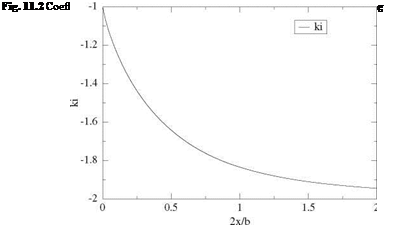Linear Model for the Tail
With the classical configuration, the tail is influenced by the downwash of the main wing. The downwash varies from ww at the wing (x = 0) to wT = 2ww in the Trefftz plane (x = +ro). The coefficient of downwash, ki = wt/ww| at the tail location is between -1 and -2. A study of the downwash induced by the vortex sheet of an elliptically loaded wing, provides a quantification of this effect, as shown in Fig. 11.2.
One also assumes a rectangular tail with an elliptic loading. This is a valid approximation since the tail has a low aspect ratio ARt = bt /ct where bt and ct are the tail span and chord, respectively. The tail mean camber is dt. The tail lift coefficient is given by

 |
dt
a + aim + ait + tt + 2 (11.7)
ct

![]()
where aim represents the induced incidence due to the wing downwash at the tail lifting line and ait that due to the tail downwash on itself. Using the results of Prandtl Lifting Line
The linear decomposition for the tail lift consists of
dCLt 2n A + ki dCLm
da 1 + Ar n ARm d a
2n dt ki
CLt0 (tt) = 2 tt + 2- + *- CLm0 (11.10)
1 + Ar, Ct П ARm
Note that the tail setting angle tt, which controls the airplane flight operation, does not appear in the tail lift slope. The reference area for the tail lift is the tail area At = btct.
The tail drag is the sum of the friction drag CDt0 and the induced drag CDit calculated with formulae similar to those used for the wing. The area of reference for the tail drag is At.
The moment coefficient for the tail can be decomposed as
Again, we note that the moment slope for the tail is independent of the tail setting angle.











